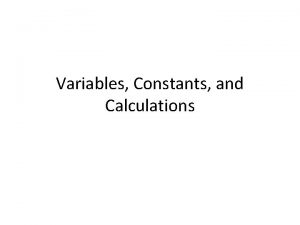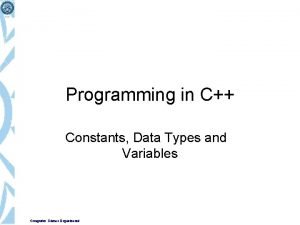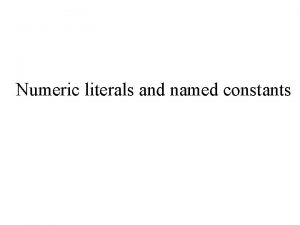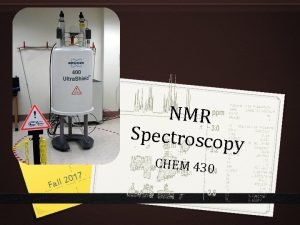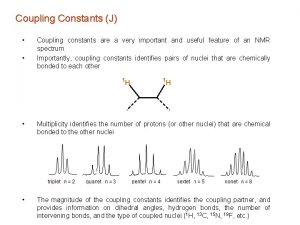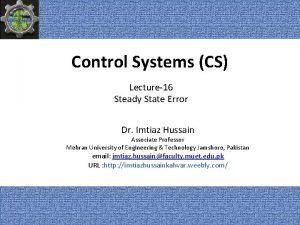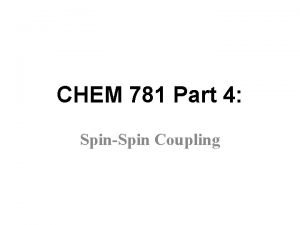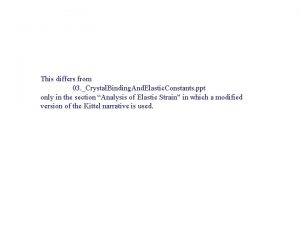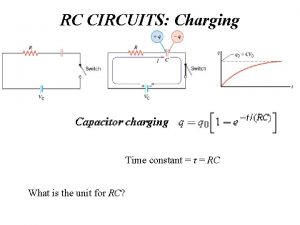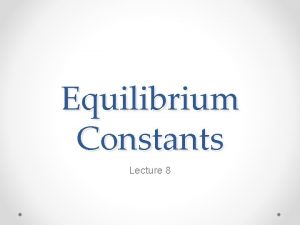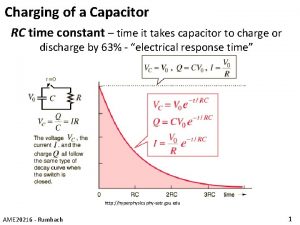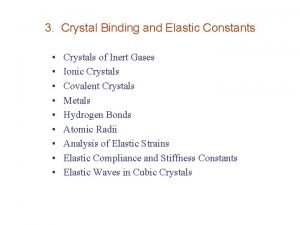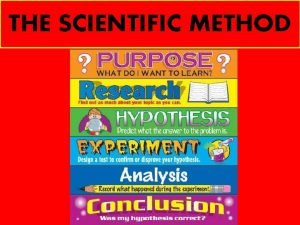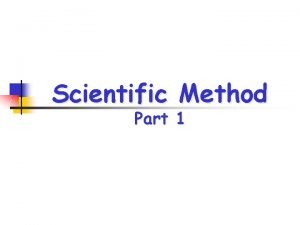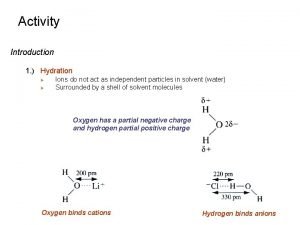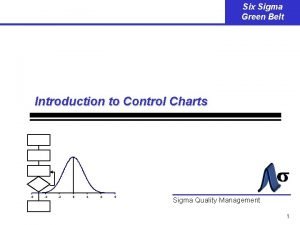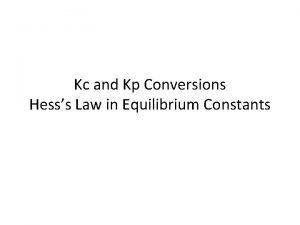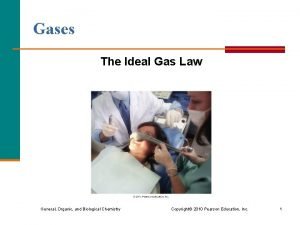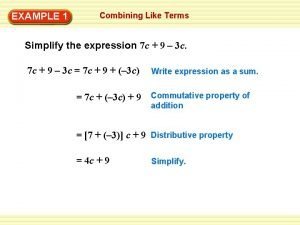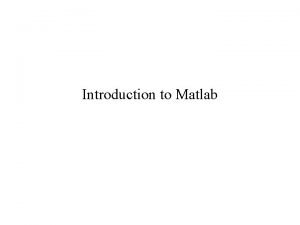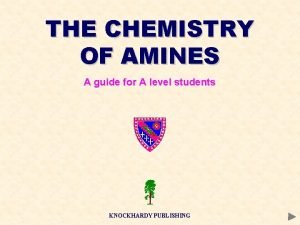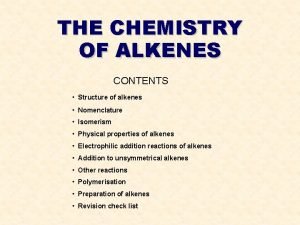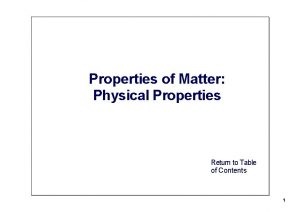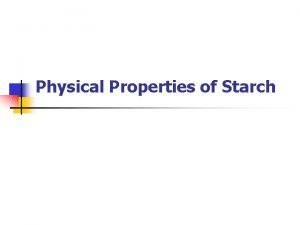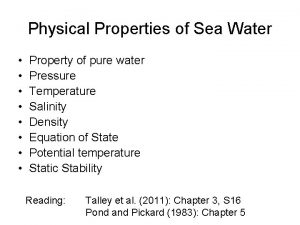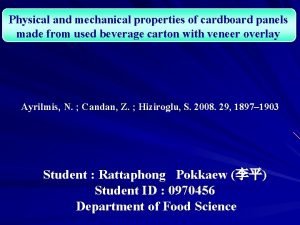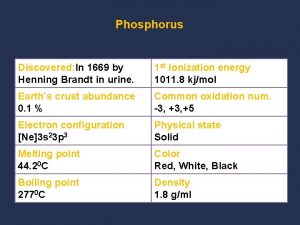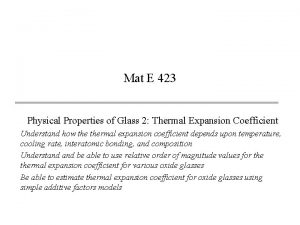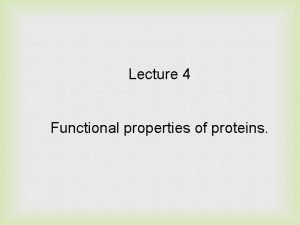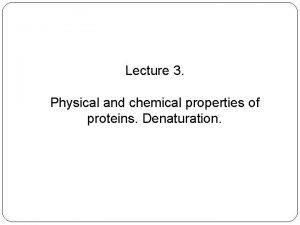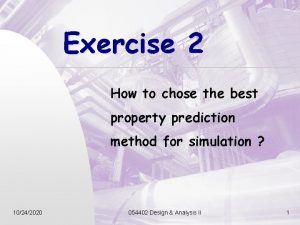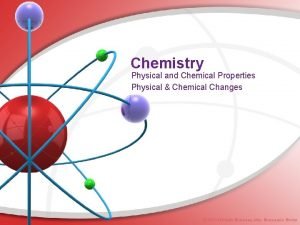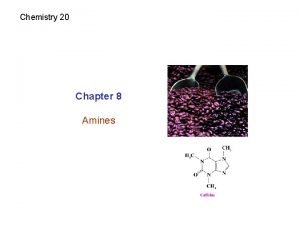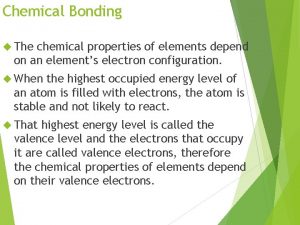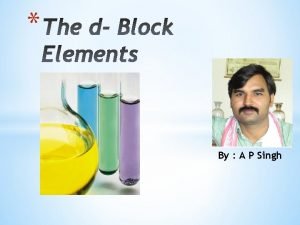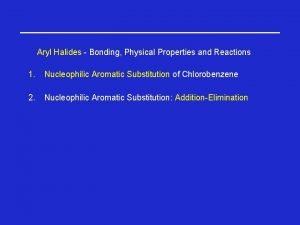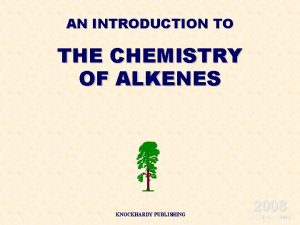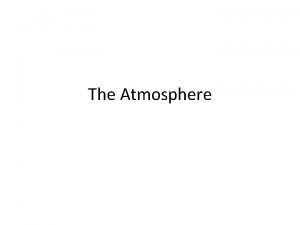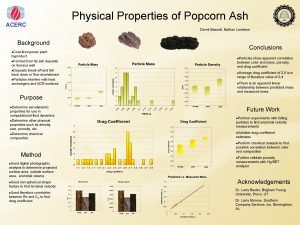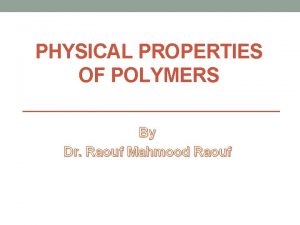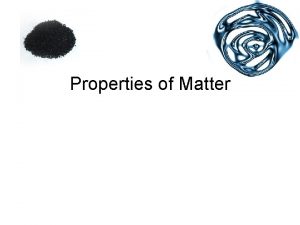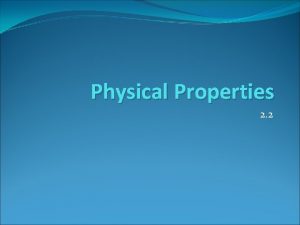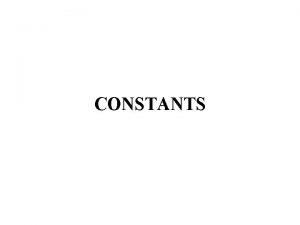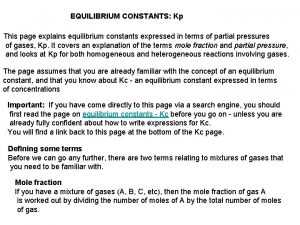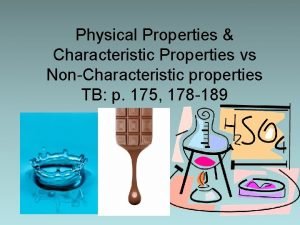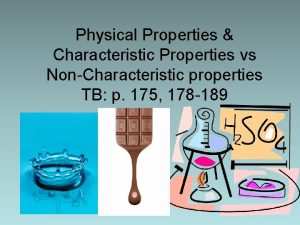The physical constants as properties of the selfregulating

























































![References [ 1 ] Fleming, R. , (2018) "Physical Constants as Properties of the References [ 1 ] Fleming, R. , (2018) "Physical Constants as Properties of the](https://slidetodoc.com/presentation_image_h2/b35ebb9979f41f39dd269d5305505562/image-58.jpg)

- Slides: 59

The physical constants as properties of the selfregulating quantum field 1 By Ray Fleming Physics Beyond Relativity, Prague, October 18 -21, 2019

Evidence of the Quantum Field Ø Ø Ø Polarizability of Space Magnetizability of Space Electric and Magnetic Constants Lamb Shift Electron Self-Energy and Corrections to g-Factor Casimir Effect 2, 3, 4 Black Body Radiation in a Vacuum Cosmic Microwave Background Spontaneous Emission Radioactive and “Particle” Decay Proton Scattering Dynamical Casimir Effect

Hypotheses Involving the Quantum Field Ø Hawking Radiation Ø Unruh Effect Ø Scharnhorst Effect Ø Sonoluminescence Ø Proton degeneracy pressure

ε 0 and μ 0 can be thought of as the resistance of free space to polarization and magnetization respectively. 1, 5 What is the physical cause of the quantum field’s resistance?

Quantum van der Waals Torque Ø Per the Casimir effect the quantum field produces van der Waals forces. One of those forces is necessarily van der Waals (VDW) torque. 1 Ø Quantum VDW torque regulates all linear and rotational motion. 1

The Speed of Light Ø The speed of light is not a fundamental constant 5 Ø The electric and magnetic constants are more fundamental 5 Ø Van der Waals torque is fundamental 1

Consequences to Relativity Space: “a boundless threedimensional extent in which objects and events occur and have relative position and direction. ” Ø Space contains matter but is not matter 6 Ø Space has no physical dimensions 6 Ø Space has no clocks 6

Physical Dimensions and Time Ø The physical dimensions come from quantum fluctuation wavelengths. 1 Ø Time comes from quantum fluctuation frequencies 1 Ø Wavelengths and frequencies are self-regulated by the quantum field’s van der Waals torque. 1

Quantum Field Rest Frame Ø The quantum field has a rest frame. 6 Ø CMB evidence confirms it. 6 Ø Relativity theory must include this universal rest frame. 6 Ø Relativity theory without a rest frame is invalidated by quantum field theory. 6

What Changes VDW Torque? Ø Velocity relative to the rest frame increases VDW torque. 6 Ø Acceleration increases VDW torque. 6 Ø The presence of stable matter increases VDW torque. 6 Ø Casimir cavities decrease VDW torque. 7

Clock Rate and Red-Shift Ø Changes in quantum van der Waals torque changes physical clock rates. 8 Ø Clock rate slowing causes gravitational red-shifting of light leaving a massive object. 8

Speed of Light Ø ε and μ change with VDW torque Ø The speed of light changes with VDW torque. 6, 7 Ø The distance traveled changes in proportion to the clock rate keeping the speed of light constant. 6, 7

Photons and the Rest Frame Ø Photons always travel in the quantum field’s rest frame since their EM fields are in the rest frame. 6 Ø Photons do not travel in the reference frame of a source or detector moving relative to the quantum field’s rest frame. 6

Space Dimensions Ø The quantum field sets the dimensions of space in its rest frame. 6, 7 Ø A moving observer cannot change the physical dimensions of the quantum field. 6, 7 Ø A million observers moving in a million different directions and velocities do not change the physical dimensions of the quantum field in a million different ways.

No Length Contraction or Space Curving Ø Lengths are not contracted and space is not curved in the quantum field rest frame or any other frame of reference. 6, 7 Ø Applying relativistic clock rate and length corrections simultaneously in special relativity gives a wrong result. 9

Deflection of Light 6 There are 3 possible contributions of 2 GM/rc 2 causing the deflection of light near a massive object but only 2 are valid. They are; ØVariable Speed of Light, 20 ØVariable Clock Rate, and ØSpace Curvature.

Quantum General Relativity 6, 7 Ø Relativity is entirely electromagnetic Ø Stable matter increases quantum VDW torque. Ø The increase in quantum VDW torque causes clock rate slowing. Ø The increase in VDW torque changes ε, μ, and c.

Quantum General Relativity 6, 7 Quantum field theory requires that quantum general relativity is; ØElectromagnetic, in ØFlat Space, with ØVariable Clock Rates, and ØVariable Speed of Light.

Electromagnetic Acceleration 10 Ø Electromagnetic acceleration is a Casimir effect. Ø The force pushing bodies apart decreases between opposite electric charges and opposite magnetic poles. Ø The force pushing bodies apart increases between like charges and magnetic poles. Ø There is by necessity a force that varies with the inverse square of the distance.

Fatio-Casimir Effect 10, 7 Ø Fatio-Le. Sage push gravity or shadow gravity combines with the Casimir effect. Ø It is the physical cause of acceleration due to “gravity. ” Ø It is a necessary form of EM acceleration. Ø Acceleration due to “gravity” is an electromagnetic phenomena.

Inertia Ø Inertia is an electrically neutral form of self-induction. 11 Ø ε, μ, and c are the same for electrically neutral objects. 6, 7 Ø The physical cause is the same. 6, 7 Ø A physical mechanism for inertia invariably leads to an electrically neutral Maxwell force. 6, 7

The Matter Force 11 Due to the polarization of the quantum field with respect to matter-antimatter orientation, there is an electrically neutral force equivalent to the electromagnetic force.

Matter Force Constants and Symbols 7 Ø The unit of matter charge is proportional to the number of particles not mass. Ø Matter is positive and antimatter negative.

The Matter Force Equations 11 Note: m was used as the matter charge instead of q.

Matter Force Examples 11 Øinertia Øspinning tops and gyroscopes Øprecession of the perihelion of Mercury Øtidal forces between solid objects Øsolar and Earth dynamos Øspiral galaxy formation Øde Sitter precession or geodetic effect ØLense-Thirring precession ØLorentz forces aka dark matter ØRepulsion between matter aka dark energy

Gravity is Electromagnetic Ø All forces attributed to “gravity” are quantum field effects. 6, 7 Ø The repulsive matter force opposes the Fatio-Casimir effect (gravity). 11, 7 Ø G is the sum of matter repulsion, Fatio. Casimir effect, neutral Lorentz forces, and other neutral matter force effects. 11, 7 G = GFC – GMF + GLF

Maxwell Stress-Energy Tensor Ø The Maxwell stress-energy tensor in quantum field metric spacetime (qμν) fully describes all forces; EM, weak, strong, gravity, and mechanical. 7 Note: The Maxwell stress tensor must incorporate corrections due to changes in van der Waals torque.

Strong Nuclear Force is equal to the Casimir effect between protons and neutrons. 11, 12

Weak Interactions All weak interactions are explainable as interactions with quantum fluctuations. 13

Electric Charge (e) Ø Per Gauss’ Law the surface integral of the flux of the polarization (P) over the surface area (A) gives the charge inside. Ø But, that is backwards. 1 Ø The flux of polarization is a function of the quantum van der Waals Torque. 1 Ø In reality particles are simple polarizers and the charge magnitude is determined by the quantum field. 1

Fractional Charges Ø Fractional charges cannot occur in free space. 1 Ø Fractional charges can occur when the quantum field is limited such as in a Casimir cavity such as in the fractional quantum Hall effect. 1

Planck’s Constant Or, in natural units h can be set to dimensionless 1 such that E = f.

Energy and Frequencies When there is more than one frequency, energy is a function of the sum of all frequencies.

Fine Structure Constant (α) In natural units where ε 0, h, and c all equal dimensionless 1 we get the following.

Fine Structure Constant (α) (cont. ) The fine structure constant is the volumetric polarization of the quantum field due to a single polarizer/particle. 14

Quantum Origin of Spin The basic assumption is that polarization of the quantum field, while requiring dipole rotation, does not induce net rotation of the field. That assumption is wrong! 15

Quantum Origin of Spin (cont. ) Dipoles that rotate in opposing directions require additional energy to bring like charges closer together, 15 and…

Quantum Origin of Spin (cont. ) Ø Less energy is required for polarization to occur with one direction of rotation. 15 Ø So, that is what nature does. 15

Quantum Origin of Spin (cont. ) Ø The quantum field rotates even if the “bare” electron is stationary. 15 Ø Spin is a quantum field polarization effect. 15 Ø Rotating quantum dipoles give the illusion of a rotating spherical shell while the center of mass of the individual dipoles may not be moving. 15

Spin & Angular Momentum Spin and angular momentum are properties of the VDW torque since all the constants on the right are properties of the VDW torque. 15

Electron Magnetic Moment Ø To compute a magnetic moment we need charge and spin but we also need a radius not mass. 15 Ø The presence of mass here is a hint that mass is electromagnetic. 15

Electron Physical Dimensions The use of mass hides the fact that we are using the electron’s Compton wavelength as the physical dimension. 15

Electron Magnetic Moment (cont. ) Ø Spin and Planck’s constant cancel leaving c as the velocity term. Ø g = ~2 because of the dipoles 15 Ø The electron magnetic moment is due to a quantum dipole structure at Compton wavelength dimensions. 15

Proton Magnetic Moment Ø The proton spin magnetic moment can be expressed in a similar fashion to the electron magnetic moment. 15 Ø As before we must ask why the mass is there? 15

Proton Dimensions Ø The proton’s Compton wavelength is not a real dimension. Ø The proton’s real diameter is 1. 3245 times larger than the proton’s Compton wavelength. 15 λp = 1. 321409853 x 10− 15 meters Rp = 0. 8751× 10− 15 meters

Proton g-Factor Error Ø The standard g-factor based on the proton’s Compton wavelength is 2. 7928473508 μN. Ø The proton g-factor based on its charge radius is 2. 1086 μPr (the proton radius magneton). 15

Proton Magnetic Moment (cont. ) Ø Again spin and Planck’s constant cancel leaving the speed of light as the velocity term. 15 Ø This tells us that the proton’s magnetic moment is due to some kind of structure at its charge radius. 15

Mass Poincaré (1900) and Einstein (1905) found that; 16, 17 m = E/c 2. But, more fundamentally; m = Eεμ E = mc 2 Or, in natural units where h = 1; m = fεμ.

Electron and Proton Mass Because of the positive and negative solutions to the Dirac equation Dirac hypothesized that the electron and positron both have positive mass due to the energy it takes to push against the quantum field. 18

Proton Mass If we take a spherical Casimir cavity with the proton’s charge radius with a shell thickness based on quantum uncertainty, and compute the amount of quantum energy it excludes using the standard quantum energy density equation, we get the mass of the proton. 19

Electron Mass If we take a spherical Casimir cavity with a diameter of the electron’s Compton wavelength with a shell thickness based on quantum uncertainty and compute the amount of quantum energy it excludes, we get the mass of the electron. 19 Mass is an electromagnetic quantum field effect.

Electron and Proton Properties Ø Electron and proton, charge, spin, angular momentum, magnetic moment, and mass are quantum field effects. 8 Ø Both behave like bare point-like polarizers surrounded by the polarized quantum field. 8

Bare Quantum Particle Pairs Ø The quantum field is composed of bare particle pairs. 8 Ø They are massless since they are too short-lived to form a stable quantum field around them. 8

Matter-Antimatter Polarity Ø Electrons are surrounded by quantum electron-positron pairs. 8 Ø Protons are surrounded by quantum proton-antiproton pairs. 8 Ø They have different sizes due to their different polarization rates due to electric and matterantimatter polarity. 8 Ø The speed of light limits the size.

Other Physical Constants The remaining physical constants, except for G, are functions of the constants already discussed and are therefore functions of the quantum field. 1 Ø Coulomb’s constant (ke) Ø impedance (Z 0) Ø admittance (Y 0) Ø Bohr magneton (μB) Ø conductance quantum (G 0) Ø Josephson constant (Kj)

Other Physical Constants (cont. ) Ø magnetic flux quantum (φ0) Ø nuclear magneton (μN) Ø van Klitzing constant, (RK) Ø Bohr radius (a 0) Ø classical electron radius (re) Ø Rydberg constant (R∞) Ø Hartree energy (Eh)

Physical Constants All physical constants and forces are a function of the quantum VDW torque. 1, 6, 7
![References 1 Fleming R 2018 Physical Constants as Properties of the References [ 1 ] Fleming, R. , (2018) "Physical Constants as Properties of the](https://slidetodoc.com/presentation_image_h2/b35ebb9979f41f39dd269d5305505562/image-58.jpg)
References [ 1 ] Fleming, R. , (2018) "Physical Constants as Properties of the van der Waals Torque of the Quantum Field, ” GSJournal. net, July 3, 2018. [ 2 ] Casimir, H. B. G. , Polder, D. , (1948) "The Influence of Retardation on the London-van der Waals Forces, " Phys. Rev. 73, 360 -372. [ 3 ] Lamoreaux, S. K. (1997), "Demonstration of the Casimir Force in the 0. 6 to 6 μm Range". Physical Review Letters 78: 5. [ 4 ] Mohideen, U. ; Roy, Anushree (1998), "Precision Measurement of the Casimir Force from 0. 1 to 0. 9 µm". Physical Review Letters 81 (21): 4549. [ 5 ] Dicke, R. H. , (1957), “Gravitation without a Principle of Equivalence, " Rev. Mod. Phys. , 29 363. [ 6 ] Fleming, R. (2019), “General relativity as a quantum van der Waals torque effect, ” researchgate. net, August 19, 2019. [ 7 ] Fleming, R. (2019), “The Maxwell force as a unified force theory including gravity, ” GSJournal. net, September 3, 2019. [ 8 ] Fleming, R. (2018), “Electron Properties Explained as Quantum Field Effects, ” GSJounal. net, September 18, 2018. [ 9 ] Einstein, A. , (1907) ¨Uber das Relativitätsprinzip und die daraus gezogenen Folgerungen. Jahrbuch der Elektrizität und Elektronik, 4, 1907. [ 10 ] Fleming, R. (2014), “Electromagnetic Motion as an Extended Casimir Effect, ” GSJournal. net, December 11, 2017. [ 11 ] Fleming, R. (2012), The Zero-Point Universe. [ 12 ] Fleming, R. (2014), “The Nuclear Force Computed as the Casimir Effect Between Spheres, ” researchgate. net, March 2, 2014. [ 13 ] Fleming, R. (2014), “Quantum jumps as vacuum fluctuation particle pair interactions analogous to Hawking radiation, ” GSJournal. net, August 29, 2015. [ 14 ] Fleming, R. , (2018) "Fine Structure Constant as the Polarization of the Quantum Field by a Unit Charge, ” GSJournal. net, July 3, 2018. [ 15 ] Fleming, R. , (2018) "Particle Spin and Magnetic Moment as Quantum Field Effects, ” GSJournal. net, September 18, 2018. [ 16 ] Poincaré H. , (1900) "La Théorie de Lorentz et le Principe de Réaction, " Arch. Néerland. Sci. Ex. Nat. (2) 252– 27830. [ 17 ] Einstein, A. , (1905) , “Does the inertia of a body depend upon its energy-content? " Ann. Der Phys. 18, 639 -641. [ 18 ] Dirac, P. A. M. , (1930), A theory of electrons and protons, Proceedings of the Royal Society A, Published 1 January 1930. [ 19 ] Fleming, R. (2012), “Proton and electron mass derived as the vacuum energy displaced by a Casimir cavity, ” March 10, 2012. [ 20 ] Einstein, A. , (1911) “Uber den Einfluss der Schwerkraft auf die Ausbreitung des Lichtes, ” Annalen der Physik, 35 : 898– 908, 1911.

Ray Fleming rayrfleming@gmail. com Note the middle initial r “Quantum Physics has explained all of chemistry and most all of physics. ” Paul Dirac (FIFY) Papers on: GSJournal. net Researchgate. net Academia. edu
 Chemical property of water
Chemical property of water Const in c#
Const in c# Constant int
Constant int Named constants
Named constants Nmr principle
Nmr principle Geminal coupling
Geminal coupling Hyperfine splitting
Hyperfine splitting Velocity error constant formula
Velocity error constant formula Chem
Chem Avogadro's law constant
Avogadro's law constant Crystal binding and elastic constants
Crystal binding and elastic constants The timing device in an automobile's intermittent
The timing device in an automobile's intermittent Equiibrium constant
Equiibrium constant Rc time constants
Rc time constants Crystals for binding
Crystals for binding Constants in scientific method
Constants in scientific method Elastic compliance
Elastic compliance Constant in scientific method
Constant in scientific method Equilibrium constant activity
Equilibrium constant activity Walter shewhart
Walter shewhart Hess law for equilibrium constants
Hess law for equilibrium constants R constant chemistry
R constant chemistry Combine like terms examples
Combine like terms examples Natural logarithm in matlab
Natural logarithm in matlab Mark overmars game maker
Mark overmars game maker Extensive and intensive examples
Extensive and intensive examples Amino acid optical isomers
Amino acid optical isomers Physical properties of alkenes
Physical properties of alkenes Physical and chemical properties of sulphuric acid
Physical and chemical properties of sulphuric acid 2 hydrogen 1 oxygen
2 hydrogen 1 oxygen A scientist performs an experiment, and an actor performs a
A scientist performs an experiment, and an actor performs a Physical properties of starch
Physical properties of starch Physical properties of sea water
Physical properties of sea water Thermal conductivity in dentistry
Thermal conductivity in dentistry Lesson 3 physical changes answer key
Lesson 3 physical changes answer key Material properties of cardboard
Material properties of cardboard Physical change
Physical change Chemical properties of phosphorus
Chemical properties of phosphorus Physical properties of paint
Physical properties of paint The physical properties of metals include luster and
The physical properties of metals include luster and Anything that has mass and takes up space
Anything that has mass and takes up space Thermal expansion notes
Thermal expansion notes Physical properties of protein
Physical properties of protein Physical properties of protein
Physical properties of protein What are the physical properties of igneous rocks
What are the physical properties of igneous rocks Yes or no
Yes or no Mrs brosseau's binder
Mrs brosseau's binder Naming amine
Naming amine Physical properties of elements depend on
Physical properties of elements depend on Chemical and physical properties of helium
Chemical and physical properties of helium Physical properties of solutions
Physical properties of solutions Physical properties of d-block elements
Physical properties of d-block elements Chemical properties of aryl halides
Chemical properties of aryl halides Physical properties of alkenes
Physical properties of alkenes Preparation of oxygen
Preparation of oxygen Propofol physical properties
Propofol physical properties Physical properties of magma
Physical properties of magma Physical properties of popcorn
Physical properties of popcorn Properties of polymers
Properties of polymers Density of metalloids
Density of metalloids

